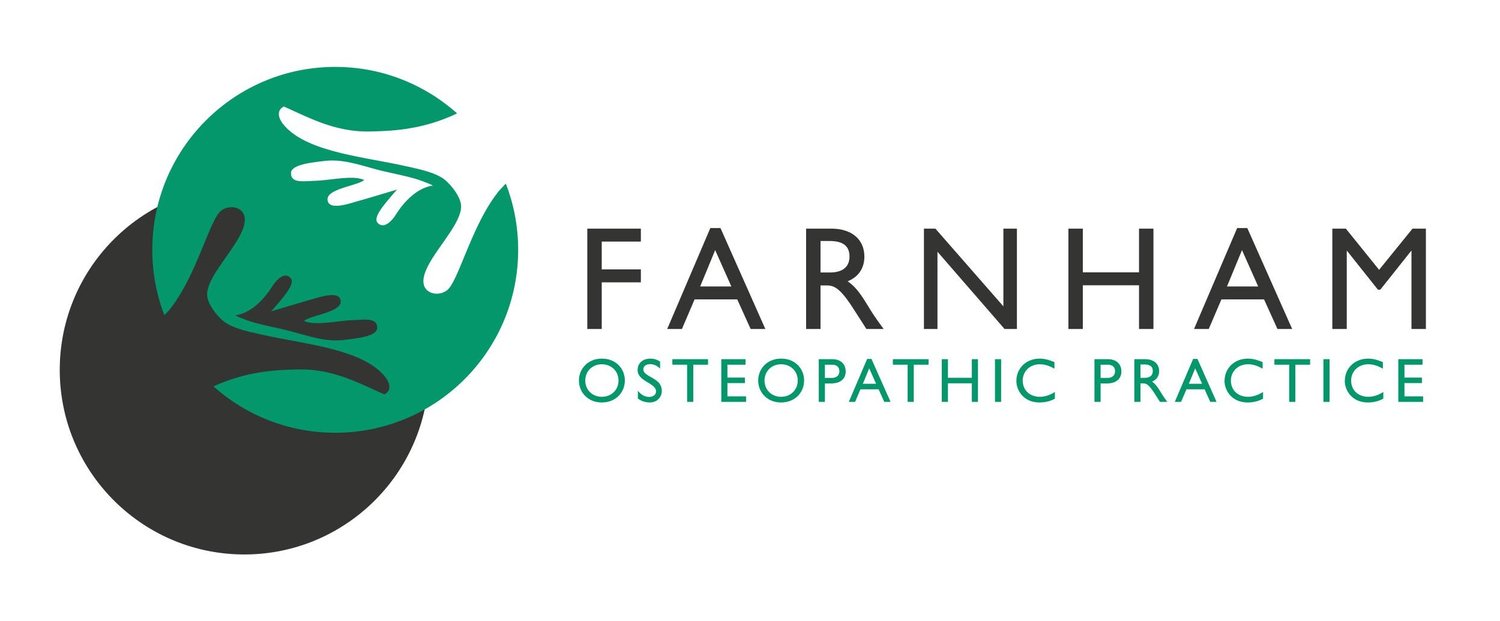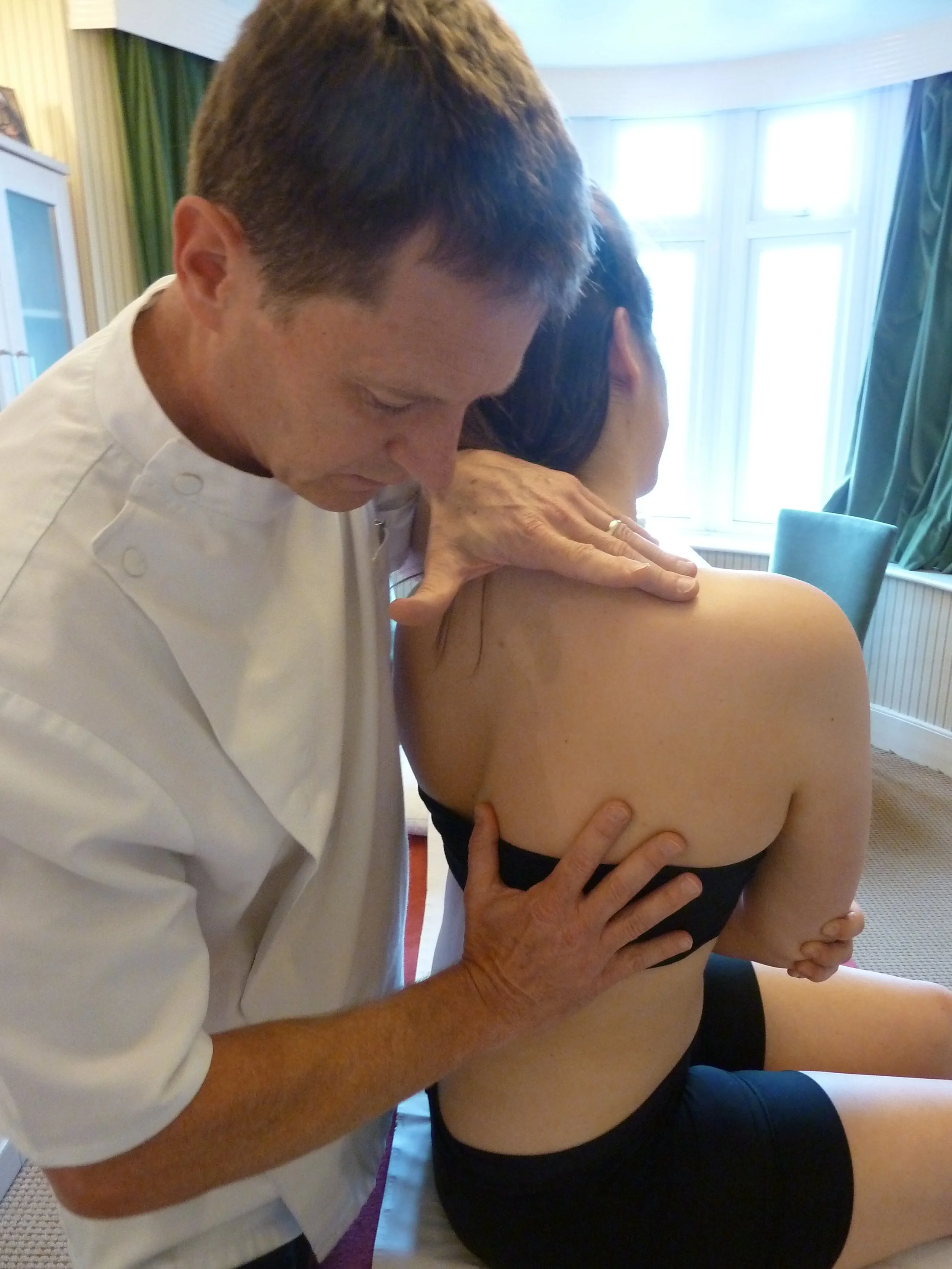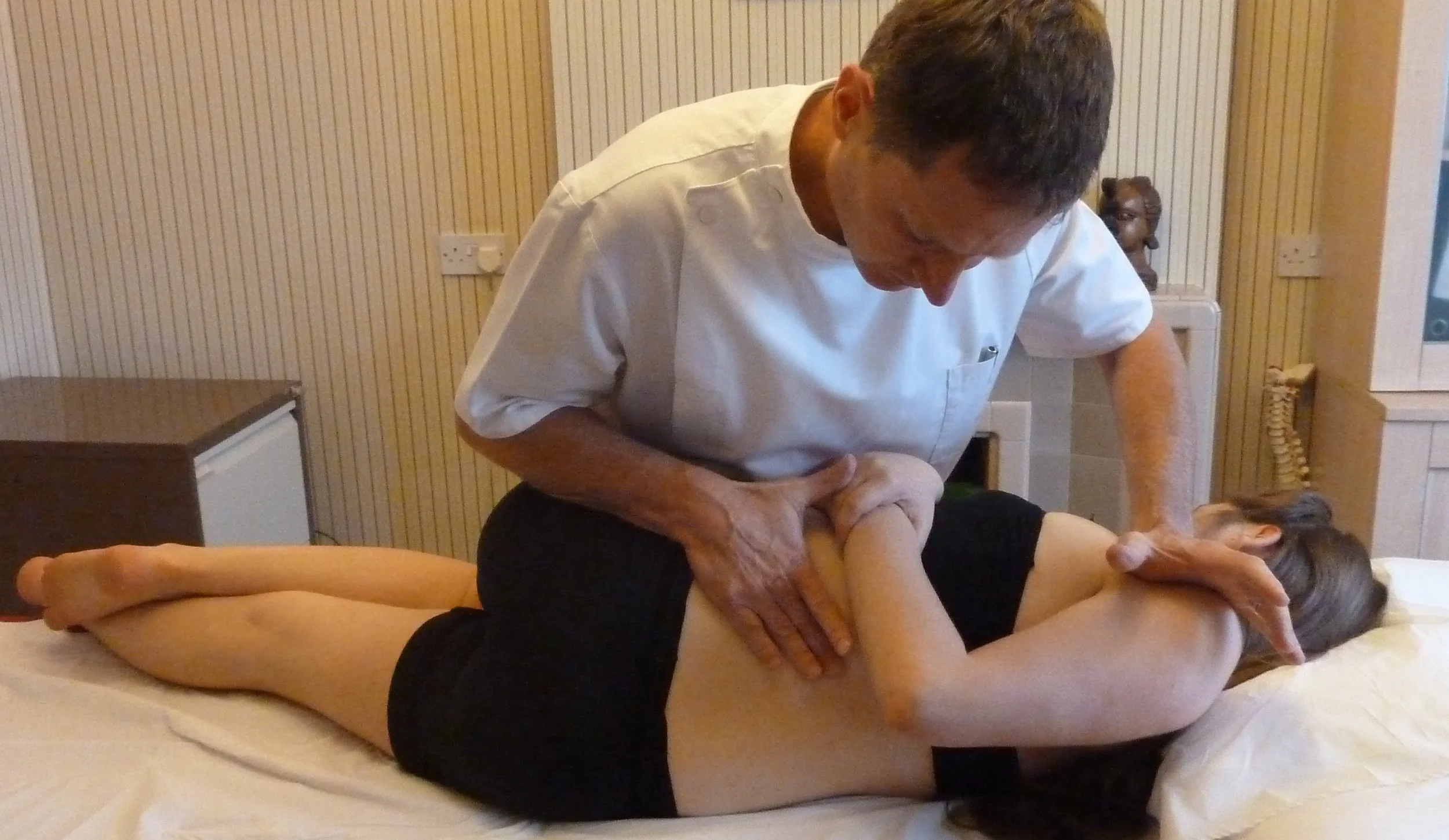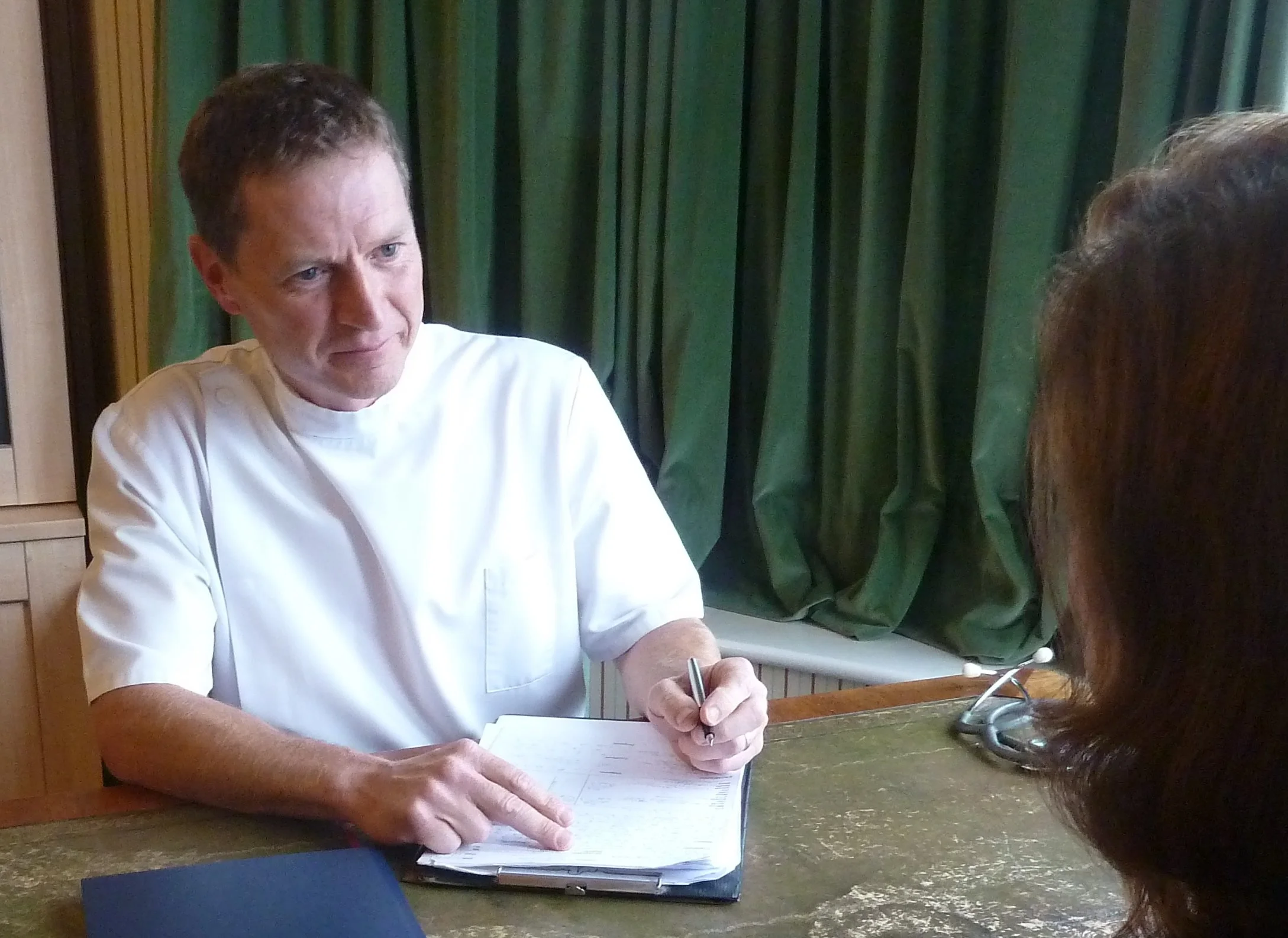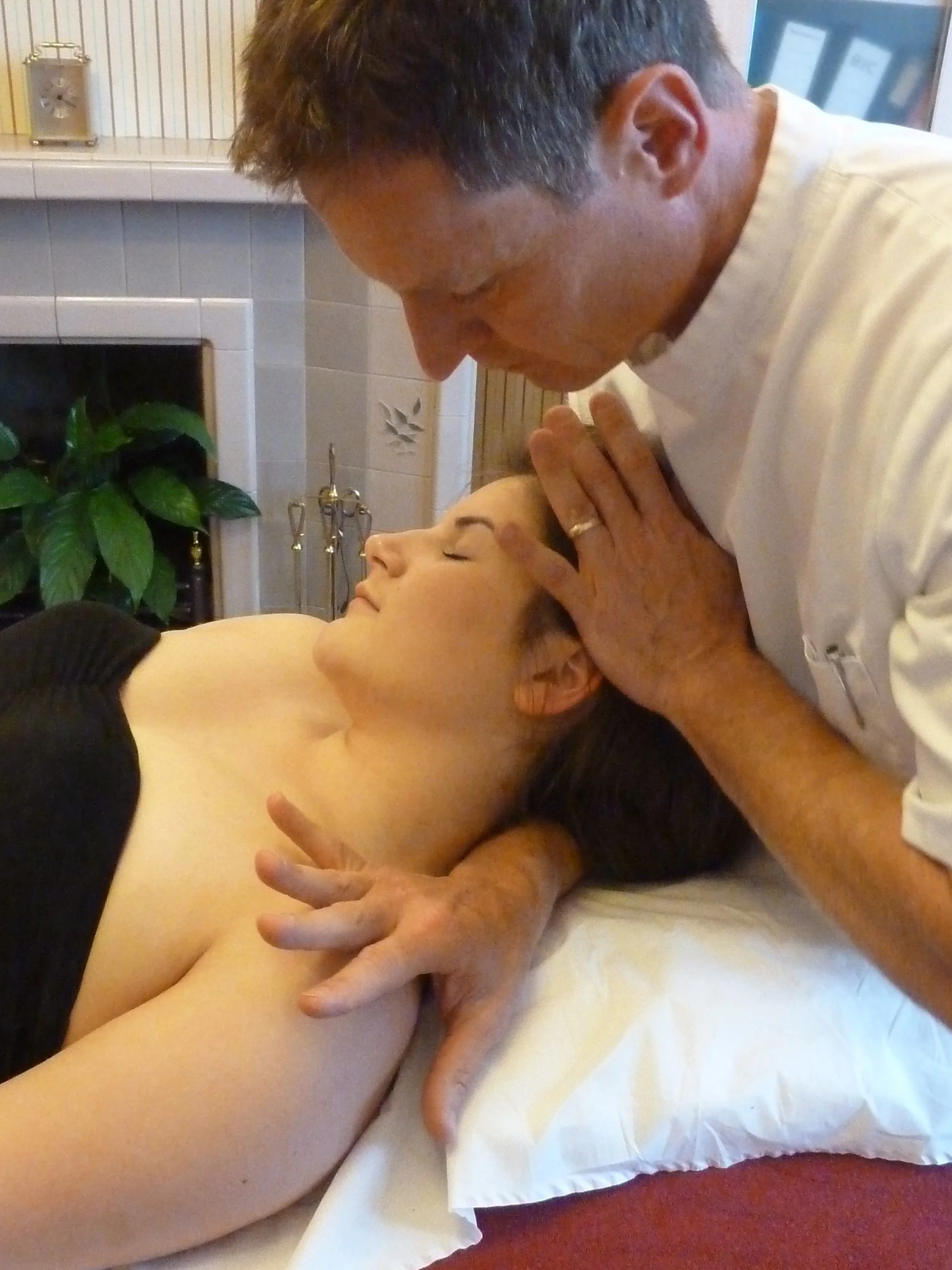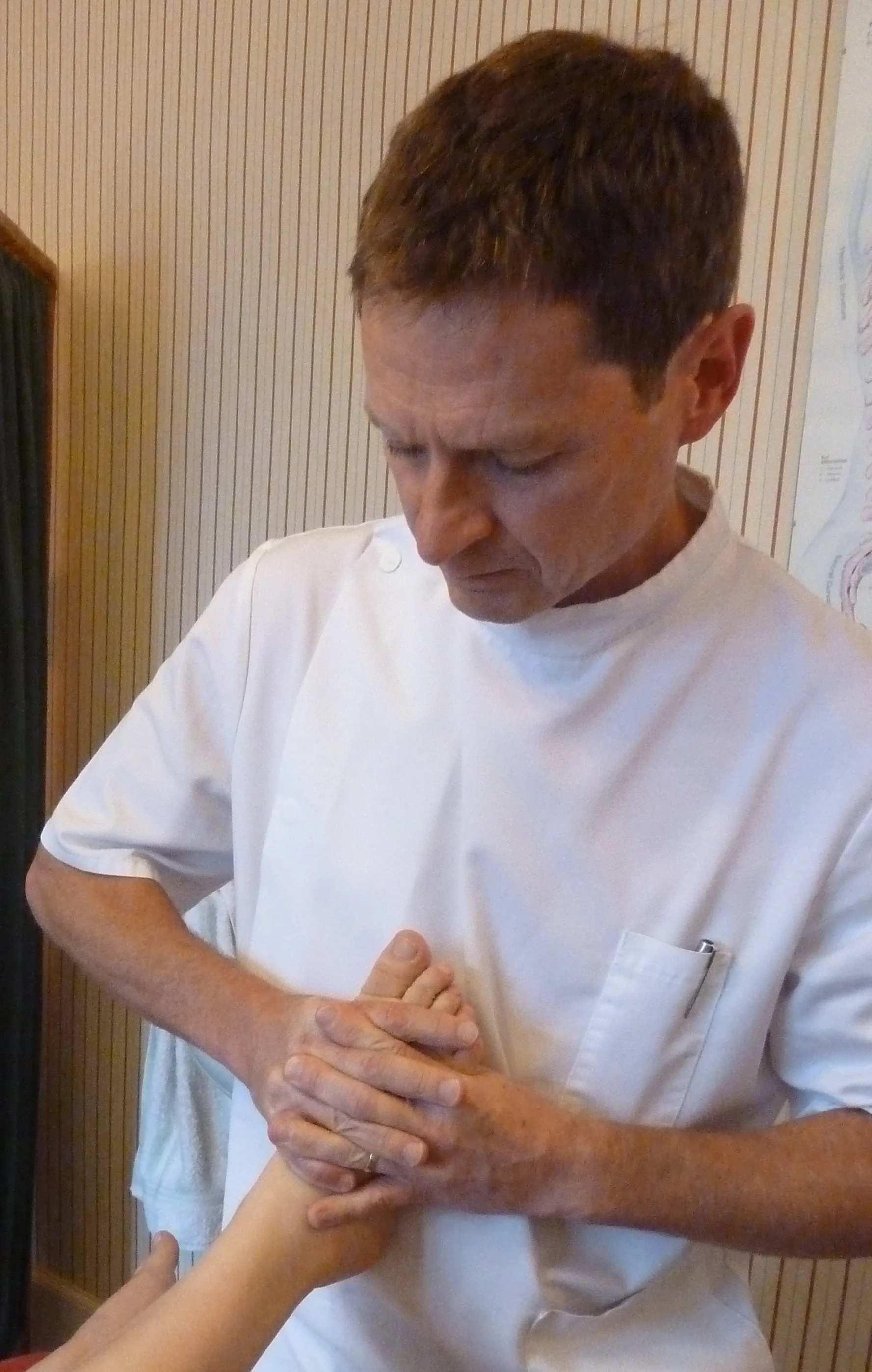What is Osteopathy?
Osteopathy is the science of human mechanics. It is the system of health care that deals largely with structural and mechanical problems of the body framework or musculo-skeletal system.
The Osteopath’s job is to diagnose and treat faults that occur in this mechanical system due to injury, stress, or any other cause and to restore normal function. When our structure is in harmony and balance, just like a well-tuned engine, it will function with the minimum of wear, stress and use of energy, leaving more energy available for living.
Osteopathy utilises the body's inherent capacity to mend itself and overcome injury, and it works by finding and removing obstructions to this natural process of self-healing. This is done by addressing restrictions in movement, major or minor, and relieving tightness in tissues such as muscles, ligaments and joints. When movement is free, a healthy flow of blood and lymph to and from the injured tissues is allowed. This assists an effective healing process and minimises the danger of long-term, chronic problems developing.
For over 40 years Chris Pinches has been using his highly trained skills to help remedy those aches and pains caused by the rigors of everyday life.
What do Osteopaths treat?
Osteopaths treat people rather than conditions, but it is useful for any problem with a mechanical component. Osteopaths are widely known for treating the common ‘bad back’, but actually our scope is far greater than that and we spend a lot of our time treating many common and disabling problems that affect the joints and muscles of the whole body. At the Farnham Osteopathic Practice we are often consulted about disorders such as:
sciatica, spondylosis, neck pain, arthritic pain and rheumatism, ‘frozen shoulder’, tennis elbow, foot pain, migraine, knee injuries, RSI, sports and disc injuries.
How Do Osteopaths Work?
We work with our hands using a variety of different techniques, depending on the individual needs of the patient, ranging from soft tissue massage techniques and passive repetitive stretching movements in order to improve joint mobility, to the high velocity thrust technique which can cause a joint to click.
The treatment programme may include advice on posture, diet, lifestyle or stress, as all these may have contributed to the problem.
Osteopathic treatment is seldom painful and we always use the minimum force necessary in any technique to get a change. Patients generally find treatment to be pleasant and relaxing. Sometimes there is a slight reaction in the first 24 hours or so after a treatment if the joint or area worked on was inflamed but the osteopath will warn you if that is to be expected.
Osteopathy for Lower Back Pain
The lower back is the most common area that osteopaths are consulted about by patients. It’s not surprising when you consider that over 80% of people will suffer with low back pain at some point in their lives and, having had low back pain once, many of them are prone to further relapses in the future.
Fortunately not many people who feel pain in their lower backs will have a serious back problem and the majority of people who experience low back pain for the first time do get better well within 6 weeks. Occasionally, however, people with low back pain can go on to develop chronic low back problems.
By seeing an Osteopath the person is ensuring a careful assessment and evaluation of their problem culminating in a diagnosis. Once a diagnosis is reached the Osteopath will discuss the treatment options available and, if appropriate, commence treatment. By improving function and relieving tensions and restrictions in the body the Osteopath is helping the body to rebalance thus reducing your symptoms to a pain-free level. To help achieve this state, and then maintain it, the Osteopath will usually give advice and prescribe appropriate exercises.
Occasionally the person presents with a back pain that is not appropriate for Osteopathy. This might be because the pain is being referred from another part of the body (such as kidney, gall bladder, etc), the problem is potentially more serious or that a diagnosis is not possible without very specialised further investigation. The Osteopath is trained to know when NOT to treat and will advise the patient on the best course of action, whether that is being referred to another health care professional, the GP or for an X Ray or MRI scan.
A Typical Visit - Initial Consultation
On the first visit the osteopath will want to know how the symptoms began and the factors which affect them. A complete medical history will be taken, including details of past illnesses and injuries, and any current treatments will be noted. This is followed by an osteopathic examination which looks at the patient’s posture, mobility and muscle tone.
From the outset of our training we develop a highly-tuned sense of touch in our fingers. Through this ability to palpate we conduct a detailed examination by touch. We feel the range and quality of movement of the joints and note whether the movement is restricted or excessive. We also examine the condition of the soft tissues to see whether they are normal or under stress. This enables us to build up a structural ‘survey’ of the patient to find any deviation from the structural and mechanical harmony which is the optimum for that individual.
In addition to this osteopathic assessment we are also qualified to carry out a conventional examination, such as an orthopaedic, neurological or circulatory examination, and we may request X Rays, blood tests or urine analyses if such an investigation is indicated.
Having arrived at a diagnosis, and deciding that osteopathic treatment is appropriate, the osteopath then formulates a treatment plan and carries out the first treatment.
Osteopathy for Neck Pain
Neck pain is one of the commonest symptoms that Osteopaths treat. It can be caused by many things which is why it is important to consult your Osteopath to get an accurate diagnosis. Like the lower back the neck can also suffer from injuries such as; muscle spasm, trapped nerves, prolapsed discs, strained ligaments, facet joint strains and locks, and ‘spondylosis’. Cervical Spondylosis is wear and tear of the joints in the neck and, for most of us, it is a natural consequence of the ageing process. It can often remain painless until further damage to soft tissues such as the ligaments or discs upsets the normal process resulting in pain.
Having reached a diagnosis, after first carefully assessing and evaluating the problem, the Osteopath will discuss with you the various treatment options available and, if appropriate, commence treatment. The Osteopath’s aim is to reduce your symptoms to, if possible, a pain-free level by helping the body rebalance through encouraging function and relieving tensions and restrictions in the body. He will normally give you advice and prescribe exercises to help prevent future problems.
Occasionally a person presents with a neck problem that is not suitable for Osteopathy, whether that’s because there is potentially a more serious problem or just that a diagnosis is not possible without very specialised further investigation. The Osteopath is trained to know when NOT to treat and will advise the patient on the best course of action, whether that’s being referred to another health care professional, the GP or for an X Ray or MRI scan.
Osteopathy for Joint Pain
Osteopaths are trained and experienced in the diagnosis and treatment of all the joints in the body, not just the spine. The most common peripheral joint problems we treat in the clinic are symptoms of arthritis, usually in the hips and knees, and sporting strains to the shoulders, knees, elbows and others. Pelvic joint problems often accompany low back pain and we will usually assess those joints when treating the low back.
We approach the peripheral joints just as we would the spinal joints: find the root cause of the problem and treat the painful joint as well as any other areas which may affect it - for example neighbouring joints and muscles, and corresponding spinal segments. If necessary, we may sometimes gather further information by referring for X-Ray or MRI scans.
While we acknowledge that in some cases of arthritis or trauma changes the joint may not be reversible, there is still a lot we can do to help control symptoms and minimise further damage. We can ease the stresses going through the joint by ensuring optimal movement of the affected and related joints. We can also help minimise pain by improving local circulation, treating surrounding tight muscles and giving advice on natural and medical pain relief options.
In addition to hands-on-treatment, we will usually also suggest some strengthening or stretching exercises as appropriate, and give advice on how to prevent further strains to the joint.
